The adjacent diagram shows three different modes of vibrations P, Q and R of the same string.
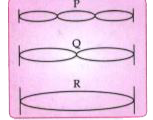
The sound of which string will have maximum shrillness?
Sound of string .P. will have maximum shrillness as its frequency is maximum.
Topper's Solved these Questions
Similar Questions
The adjacent diagram shows three different modes of vibrations P, Q and R of the same string.
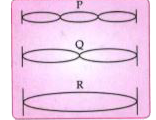
State the ratio of wavelengths of P and R.View SolutionThe adjacent diagram shows three different modes of vibrations P, Q and R of the same string.
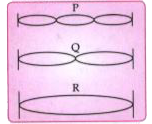
Which vibration will produce a louder sound and why?View Solution
Knowledge Check
- Question 1 - Select One
The given pie diagram represents different components of the soil. Identify P,Q and R and select the correct option
 APQRWaterBiotaMineral saltsBPQRMineral saltsBiotaWaterCPQRMineral saltsWaterBiotaDPQRBiotaWaterMineral water
APQRWaterBiotaMineral saltsBPQRMineral saltsBiotaWaterCPQRMineral saltsWaterBiotaDPQRBiotaWaterMineral water
The diagram below shows three different modes of vibration P, Q and R of the same string of a given length.

Which vibration will produce a sound of maximum shrillness (or pitch) and why?View SolutionThe diagram below shows three different modes of vibration P, Q and R of the same string of a given length.

Which vibration will produce a louder sound and why?View SolutionThe diagram below shows three different modes of vibration P, Q and R of the same string of a given length.

What is the ratio of the wavelength of vibrations P and R?View SolutionDraw a diagram to show the various modes of vibration of a stretched string.
View SolutionFig. shows three different modes of vibration of a string of length I.
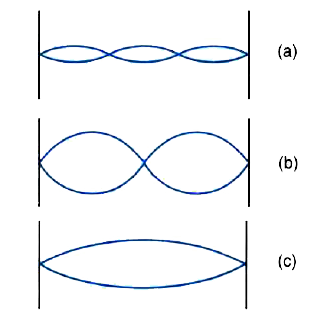
What is the ratio of wavelength between (b) and (a)?View SolutionFig. shows three different modes of vibration of a string of length I.
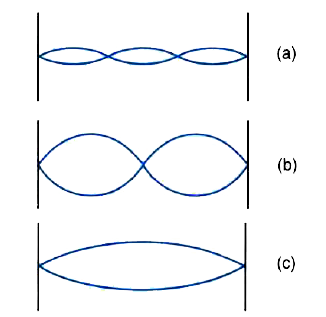
What is the ratio of frequency between (a) and (c)?View SolutionString I and II have identical and linear mass densities, but string I is under greater tension than string II. The accompanying figure shows four different situations, A to D, in which standing wave patterns exist on the two strings. In which situation it is possible that strings I and II are oscillating at the same resonant frequency ?
View Solution

